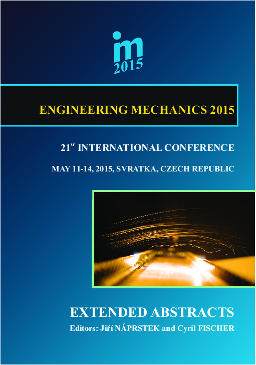Proceedings Vol. 21 (2015)

ENGINEERING MECHANICS 2015
May 11 – 14, 2015, Svratka, Czech Republic
Copyright © 2015 Institute of Theoretical and Applied Mechanics, Academy of Sciences of the Czech Republic, v.v.i., Prague
ISSN 1805-8248 (printed)
ISSN 1805-8256 (electronic)
list of papers scientific commitee
pages 272 - 273, full text
Phenomenological ductile fracture criteria represent, among others, one of powerful tools for prediction of ductile fracture. These criteria are based on evaluating damage throughout the solid body as a response to straining. The damage is influenced by plasticity but not vice versa. Therefore, these criteria are often called uncoupled as they do not mutually couple the damage and plasticity. One of immense advantages of such criteria is a possibility not only to predict the crack initiation but also to follow the propagation based on the damage. Moreover, it is not restricted for one specific locus but the damage is evaluated in the entire solid body and one or more cracks can be tracked simultaneously or sequentially. Ductile fracture criteria are calibrated on the basis of several independent calibration tests under various stress states. One way how to verify calibrated model is to simulate numerically an experimental tests and follow the crack initiation and propagation. In the present study, selected phenomenological criteria were calibrated using various calibration tests. Then, selected calibration tests were simulated together with implemented ductile fracture criteria. In our case, the verification is carried out on tensile cylindrical specimens. Finally, computationally obtained results were compared to the experimentally observed ones and the prediction ability and reliability of selected phenomenological criteria is discussed.
back to list of papers
Text and facts may be copied and used freely, but credit should be given to these Proceedings.
All papers were reviewed by members of the scientific committee.

 Powered by
Imce 3.20 © 2023, Pavel Formánek, Institute of Thermomechanics AS CR, v.v.i. [generated: 0.0290s]
Powered by
Imce 3.20 © 2023, Pavel Formánek, Institute of Thermomechanics AS CR, v.v.i. [generated: 0.0290s]